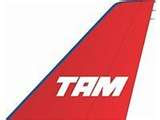.jpg) |
| Colegiales Barrio |
By Roy Heale
The Colegiales Barrio of Buenos Aires offers a laidback alternative to its noisier neighbors Palermo and Belgrano. Covering just over two square kilometers, it is one of the city's smaller barrios and a largely residential one. Known for its large, open green spaces and treed residential streets, Colegiales is squeezed between Belgrano, Chacarita, and Palermo. Although it is off the tourists' beaten track there are some interesting points of local history to discover.
 |
| Street Art |
Historically Colegiales was paired with Chacarita---the barrio situated immediately south---and the two were originally known as Chacarita de los Colegiales. In its beginnings this community was made up of small Jesuit-owned estates that were utilized as student retreats. In 1767 the Jesuits were expelled and the Spanish took control of the land. After the turn of the century and the commencement of Bernandino Rivadavia’s government in 1826, large numbers of European immigrant workers settled in the area and forced it to be divided into the two separate barrios of Chacarita and Colegiales.
Today, Colegiales maintains a strong residential feel that is characterized by its sleepy cobblestone streets lined with overhanging trees. With its close proximity to Palermo, the neighborhood is experiencing increased numbers of bars and restaurants.
 |
|
Mercado de Pulgas
|
One major tourist attraction of Colegiales is the Mercado de Pulgas---Flea Market. Founded in 1988 and situated at the intersection of Avenida Dorrego and Alvarez Thomas, this indoor market presents an eclectic collection of furniture, art work, antiques and other curiosities. If you are planning to stay long term in Buenos Aires you might just find a bargain for your new apartment here.
When in Colegiales you can retrace the footsteps of some of Argentina’s most famous sons. The comic strip Mafalda----written by humorist Quino (Joaquin Salvador Lavado)---was based on the barrio and Plaza Mafalda is dedicated to the creator and his artwork. Other famous names of the barrio include journalist Ulises Petit de Murat and inventor Ladislao Jose Biro. The latter invented the ballpoint pen and Fundacion Biro (Cramer 450) is dedicated to helping and promoting young Argentine inventors.
.jpg) |
|
Pasaje General Paz
|
On a sunny day, take time to relax in one of the many plazas or take a stroll along Pasaje General Paz, (a narrow pedestrian promenade) which attracts visitors to see its mature trees, bridgepaths, streams and ornate, balconied Andalusian-style patios. Avenida Elcano is a wide leafy boulevard that connects the barrio with Belgrano and Chacarita. Situated on the latter you’ll also find Elcano Grill, a classic neighborhood parrilla, and The Oldest, a pleasant British-styled pub. When venturing deep into the back streets of Colegiales you will be treated to a wonderful mix of classic porteño cafés, closed-door restaurants and live music venues. Mix with a stylish hipster crowd at Pipi Cucu (Ciudad de la Paz 557), a quirky French bistro-restaurant. Mismatched plates, glasses and cutlery add to the aloof charm of the place whilst the bartenders are known for mixing delights such as red fruit martinis.
.jpg) |
|
Pipi Cucu French Restaurant
|
Recently, upscale lofts were developed in what years ago were the massive Buenos Aires flour mills (known also as Silos Minetti), at 1916 Dorrego Street. Elegant and trendy, they were built into the silos themselves and have become popular with local yuppies.
 |
|
Silos Minetti
|
Colegiales also has a rich religious heritage including The Holiest Corpus Christi Monastery (450 Amenábar St.)which has been the centuries-old home to the Order of Barefoot Carmelites.
.jpg) |
| The Holiest Corpus Christi Monastery |












